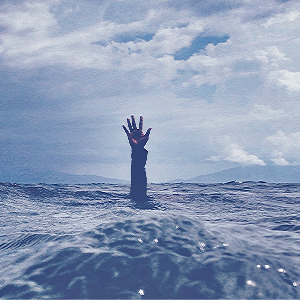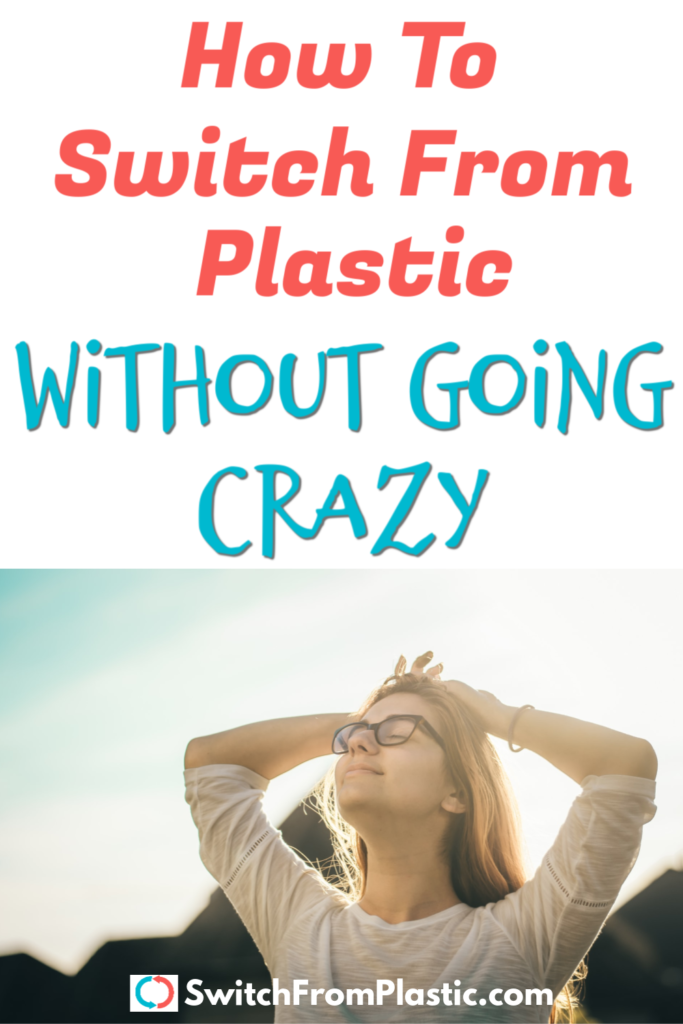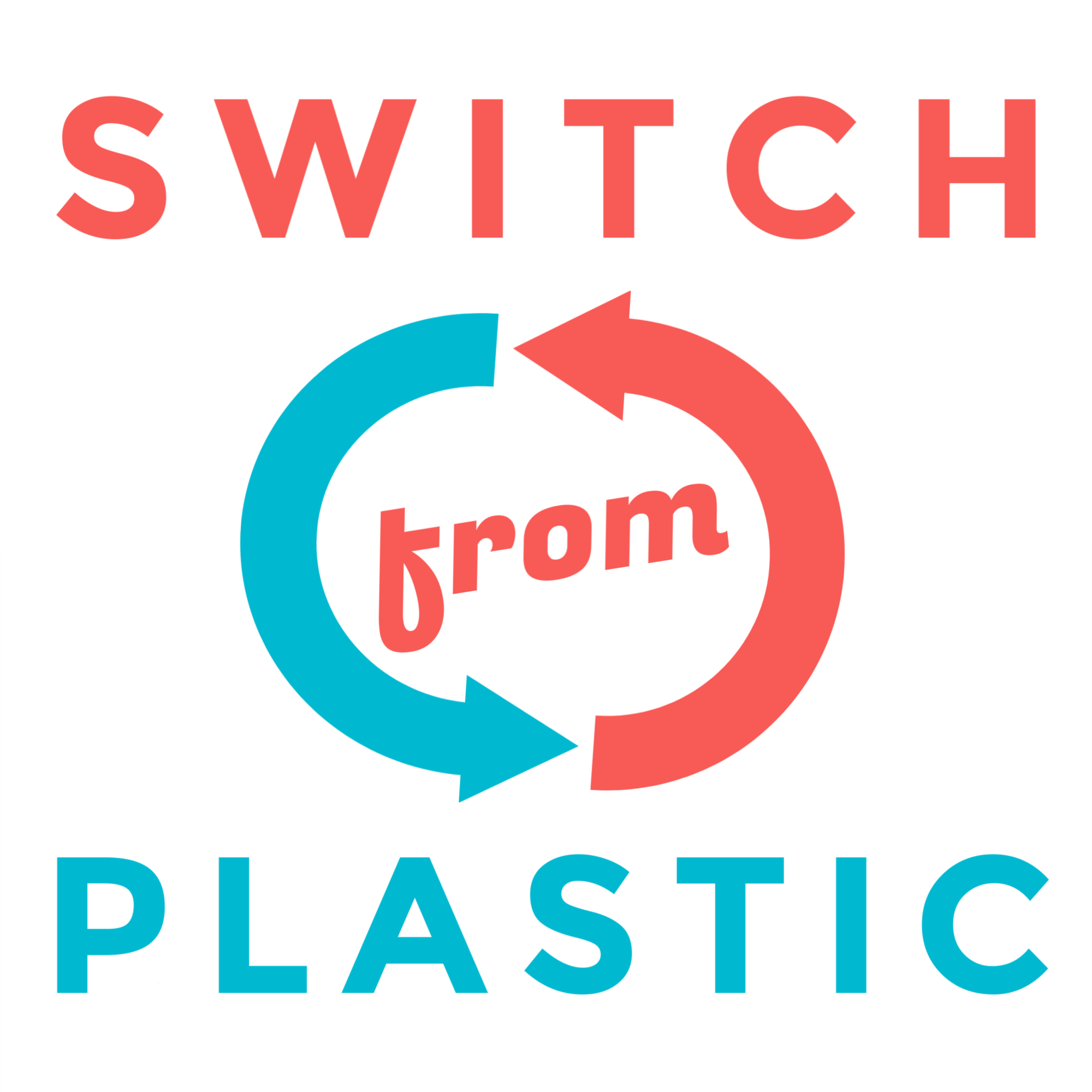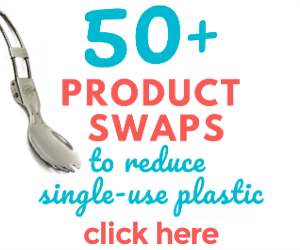You’ve seen the documentaries and read the horrible statistics. Plastic waste is filling our oceans, killing animals, and making its way into our food sources.
Enough is enough. You’re ready to start intentionally doing your part to reduce plastic waste by making lifestyle changes and voting with your wallet.

And then…you go to the store. You want to try out the recycled paper towels instead of the ones made from “fresh” trees. But the recycled paper towels are wrapped in plastic.
When you head over to the yogurt section, there’s nothing but plastic yogurt cups, and according to your town’s recycling rules, they don’t take any plastic that isn’t a bottle.
In the checkout line, you realize that you forgot your reusable plastic bags, and this store doesn’t offer the option of paper bags. Single use plastic bags it is.
By the time you leave the store, your good intentions have officially given you a headache, and you say to yourself, How the HELL am I supposed to switch from plastic when practically everything comes in plastic?!

Trust me: You are not alone. Not only have I been there, I’m still there! Figuring out how to switch from plastic to more sustainable items can be complicated sometimes, but you don’t have to go crazy.
Here are some things to remember when you start feeling frustrated.
RELATED: How to Never Forget Your Reusable Shopping Bags
IT’S A PROCESS
Food and product manufacturers have created a system of convenience that we’ve become accustomed to having.
As consumers, we’ve created our habits around the items that are available to us, and changing habits is a process. It takes time, and it’s often achieved by taking baby steps.
I didn’t stop using single use plastic items overnight, and neither will you.
Don’t go around throwing out all your half-empty shampoo bottles because they’re plastic. Finish them, recycle the bottles, and then go buy plastic-free shampoo bars. If that whole process takes 6 weeks, that’s okay!
Each battle to switch from plastic is part of a bigger war. And wars take time. Just keep on your journey and keep making progress.
EVERYONE’S EXPERIENCE IS DIFFERENT
Although the problem of single use plastic is pervasive throughout the world, not everyone has the same experience trying to break the cycle.
Here in the United States, some states—or even individual cities and towns—have bans on plastic shopping bags. In other states, plastic bags are the norm.
Recycling is completely different, too. Some cities and towns accept many different types of plastic, while others have more restrictions due to limitations on budget and technology.
Another big difference: the stores you buy from. I shop at two different grocery stores; a large standard chain store, and a smaller, locally-owned natural food store.
The stores are literally just a few miles away from one another, yet the natural grocery store has 10x the amount of plastic-free and recycled products than the large chain.
You might not have a more natural food store near you, or it might be out of your budget. If you can’t switch to ketchup that comes in a glass bottle, that’s okay!
Do what you can with what you’ve got. Small changes are better than no changes.
RELATED: 5 Single Use Plastics to Avoid When Shopping
IT’S OKAY TO HAVE NECESSARY EVILS
My friend Brook is really putting her all into switching from plastic. She sent me a text the other day when she was making corn tortillas.
“They come in plastic bags,” she said. “I don’t want to make them. What do I do?”
I let her know that I deal with the same issue (literally, with corn tortillas), and that sometimes it’s okay to have what I call “necessary evils”.
Another necessary evil of mine? Hair dye. I’ve got a little patch of gray roots right at my forehead, and I’m too vain to let it grow out. (Sorry not sorry).
I dye my hair at home, using a natural, less-toxic dye, which is important to me. I also save a ton of money by not getting my hair dyed at a salon. But the dye comes in plastic bottles, a fact that is always hard to swallow.
The key to allowing yourself to have necessary evils is identifying them and using them as motivation to make a different change instead.
Sure, Brooke can stop buying corn tortillas, but if her kids don’t fight her on them at dinnertime, I don’t think she should.
What she should do instead is take this necessary evil, accept it, and then balance the scales by making swaps to non-plastic items elsewhere in her home.
If her kids raise hell when they can’t have corn tortillas, but they don’t really care if she starts buying plastic-free floss or shampoo bars, then switching from plastic toiletries is the answer.
REMINDER Just because you purchase a product packaged in plastic doesn’t mean you endorse all single use plastics. It’s not an all-or-nothing game.
YOU’RE ALREADY PART OF THE SOLUTION
You do not have to live a zero waste lifestyle to consider yourself part of the movement to use less plastic. Any swap, big or small, makes a difference.
Just by thinking about switching from plastic, and considering the changes you can make, you’re already part of the solution.
Remember how I said that switching to plastic-free products was a process, made through changing habits? Well, the first part of changing habits is changing mindset. And changing your mindset about how you consume plastic is a HUGE step in the process.
Being part of the solution doesn’t mean you have to do all the things.
If you’re having a difficult time actually finding and buying plastic free alternatives, you can start reusing more items at home, repairing items you have (instead of throwing them away), or spreading the word.
Talking about the plastic problem with family, friends, and co-workers can help them change their mindsets, and hopefully their plastic habits. It’s a ripple effect that can lead to real progress in saving the planet.



